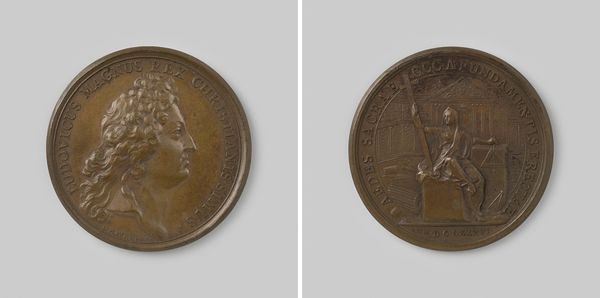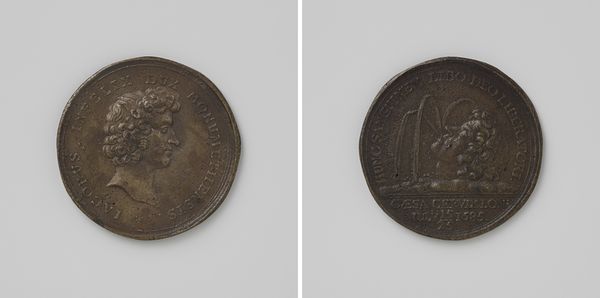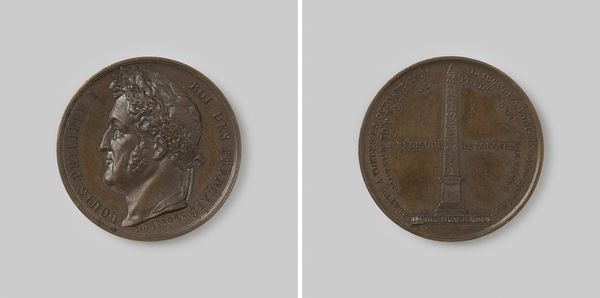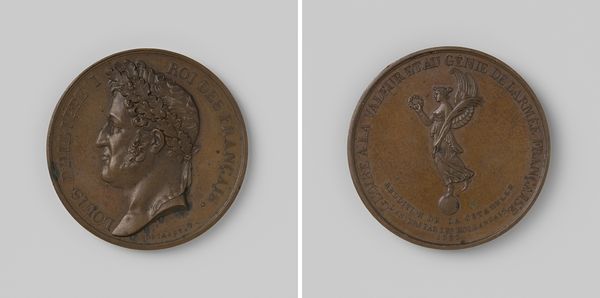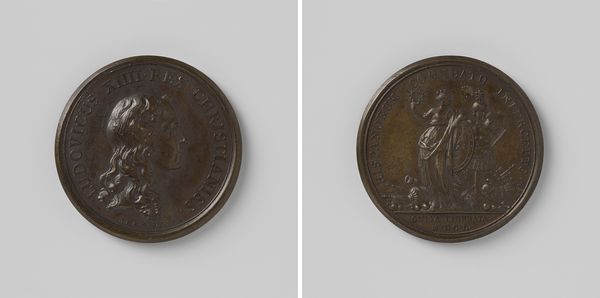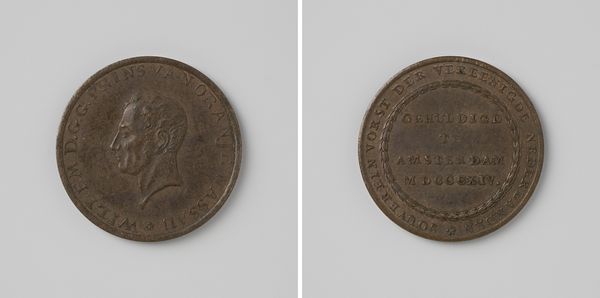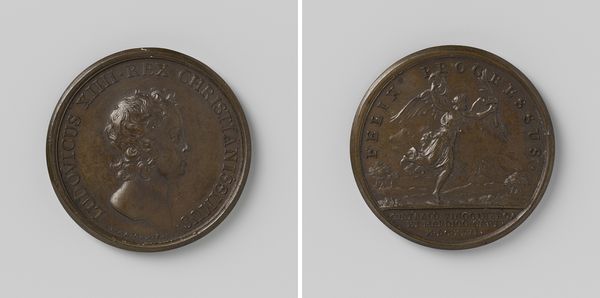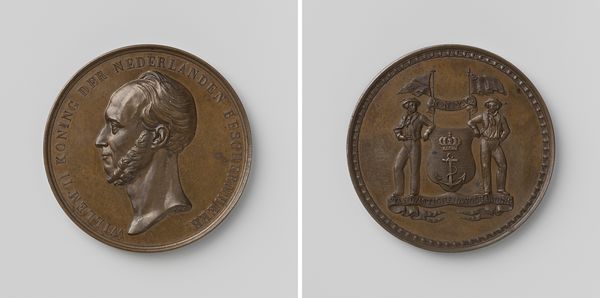
Voorgenomen onthulling van het monument ter nagedachtenis aan Adolf, graaf van Nassau en de slag bij Heiligerlee, penning ter ere van Willem III, koning der Nederlanden 1872
0:00
0:00
metal, relief, bronze
#
portrait
#
dutch-golden-age
#
metal
#
relief
#
bronze
#
11_renaissance
#
history-painting
Dimensions: diameter 3.2 cm, weight 186 gr
Copyright: Rijks Museum: Open Domain
Curator: What a fascinating little world contained in this bronze relief from 1872! It's a commemorative medal titled "Voorgenomen onthulling van het monument ter nagedachtenis aan Adolf, graaf van Nassau en de slag bij Heiligerlee, penning ter ere van Willem III, koning der Nederlanden." Quite a mouthful, I know! And it was created by Salomon de Vries. Editor: My first impression? Austere, somber even. The patina of the bronze lends it this aged gravitas. It feels very official, very...burdened by history. Curator: It certainly carries weight! One side presents a profile of Willem III, his beard meticulously detailed, looking every bit the stoic monarch. The other side features heraldic symbols and dates. You can see the dates 1568 and 1872, which frame the commemorative context. Editor: The dates are key, aren’t they? 1568 marks the Battle of Heiligerlee, a significant moment in the Dutch revolt against Spanish rule. Then 1872, the year of the medal, seemingly intended to mark the planned unveiling of a monument to Adolf of Nassau who died at Heiligerlee leading Dutch forces. Curator: Exactly. So, it is all tied up in the narratives of Dutch nationalism. Looking at Willem III’s portrait, though—there's a slight, almost melancholy downturn to his mouth, isn’t there? Medals like this were so often designed to project strength and certainty, but this...feels different. Editor: Perhaps the melancholy arises because the glorification of such events inevitably papers over the grim realities of war. Look closely, and it raises critical questions about who is being memorialized and for what purpose. The selective telling of history through such objects creates a dominant narrative, inevitably sidelining alternative perspectives and lived experiences. Curator: Absolutely. It makes you wonder about the conversations happening in 1872—the push and pull between commemorating the past and navigating the present, especially when constructing a sense of national identity. These historical narratives were often deliberately crafted for consumption. Editor: Precisely. The metal itself is loaded: bronze as a symbol of endurance, but also historically tied to weaponry, warfare. These medals exist as both art objects and historical documents—reminders, but also, in their own way, arguments. Curator: Yes, this medal’s both beautiful and rather poignant. All these layers of symbolism and history bound together. Editor: It invites us to reflect not only on the historical events but on how those events continue to shape the present. The piece is a prompt—history is not just a fixed narrative; it is an ongoing conversation.
Comments
No comments
Be the first to comment and join the conversation on the ultimate creative platform.
